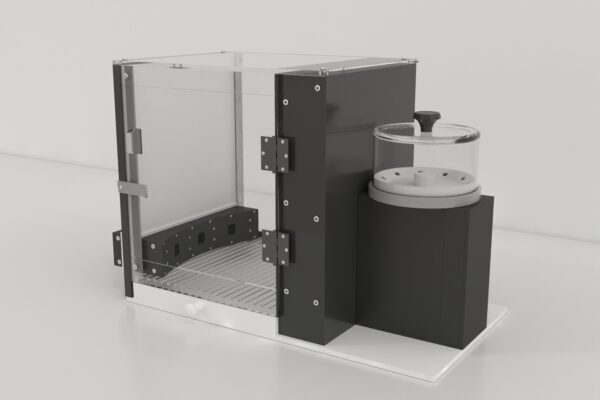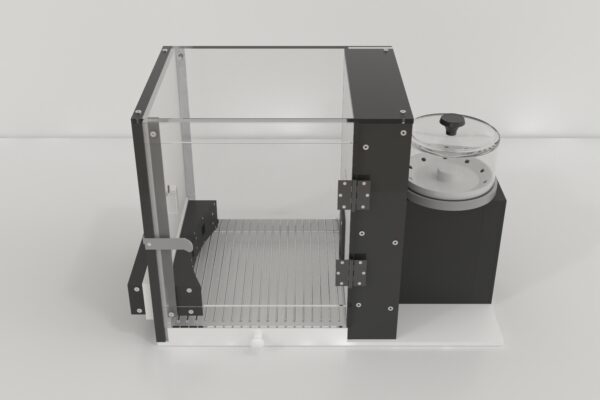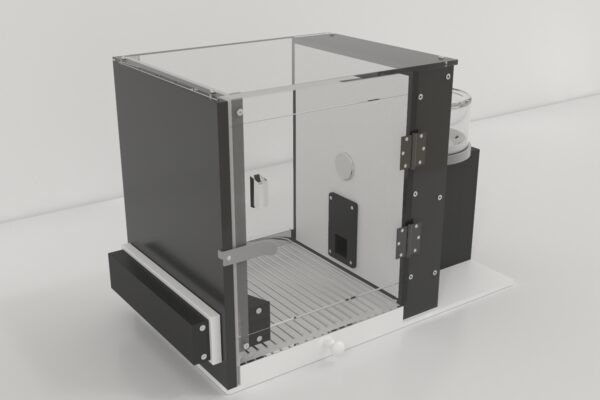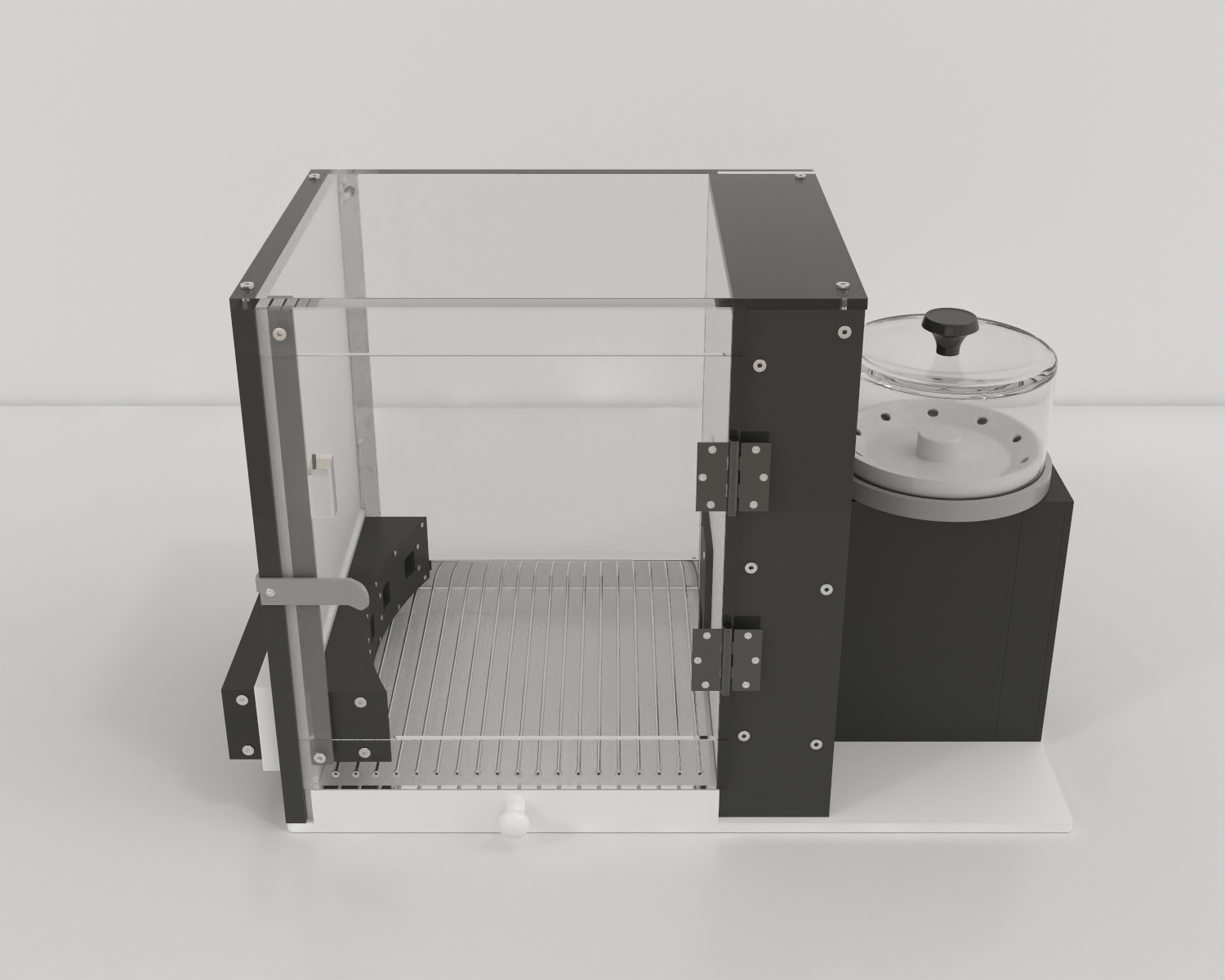Developed by Hauser et al the Three Choice Serial Reaction Time Task (3CSRTT) is a variation of the Five Choice Serial Reaction Time Task (5CSRTT) which is well-established paradigm for assessing attention and impulsivity in rodents.
This task was used to assess the role of a dietary deficit of polyunsaturated fatty acids (PUFAs), particularly ω-3 fatty acids on attention and impulsive behavior in rats. The experiment used the 3CSRTT task to measure these behavioral domains in omega-3 depleted rats, as well as in those on an omega-3 adequate diet.
The 3CSRTT apparatus consists of an operant conditioning chamber with 2 Plexiglas sidewalls; the aluminum front wall is rounded and contains three nose poke apertures (2.5 x 2.2 x 2.2 cm each, 2 cm above the floor)
Each apparatus you purchase from MazeEngineers comes with a stimulus LED light as well as an infrared nose poke sensor.
A stainless steel back wall has a food cachet installed which provides food pellets from the pellet dispenser. Infrared sensor and an LED signal light. included
The shocker floor grid allows for punishment in the experiment. The removable feces and urine tray below this grid allow for easy cleaning.





